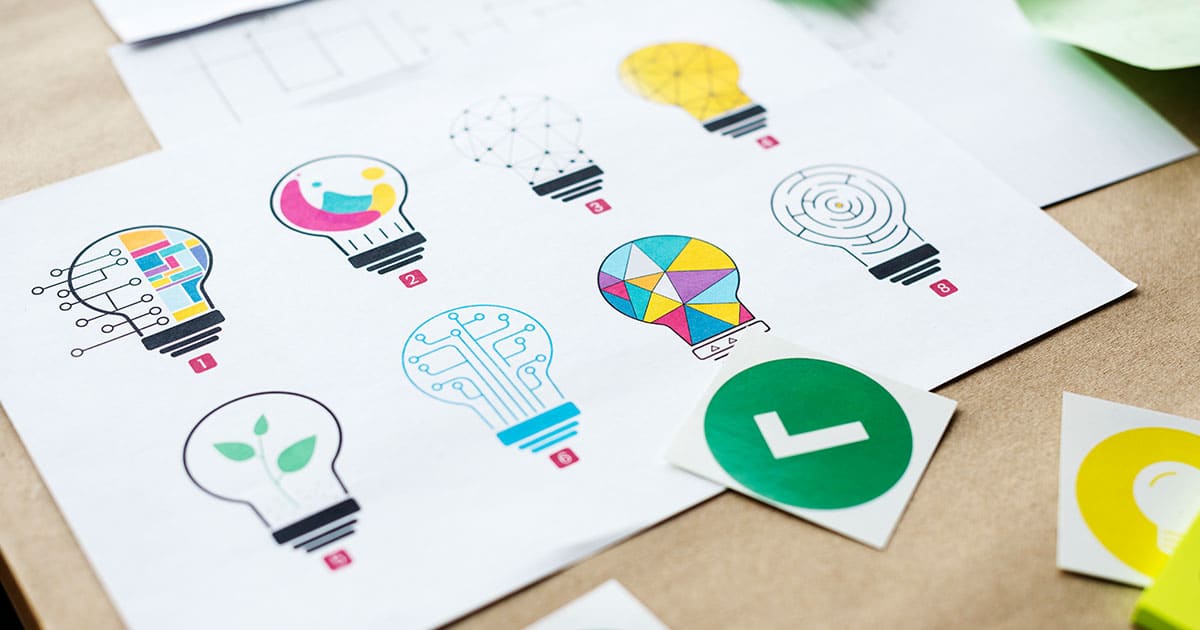In the vast expanse of the business realm, a logo is not just a graphical symbol—it’s a foundational stone for a brand’s identity. If your business were a person, the logo would be its face. In this extensive exploration, we venture into the realm of logos – charting the different types of logos, their interpretative languages, and how they serve as a direct reflection of a business’s ethos, values, and goals.
Crafting a logo might appear to be a task as simple as sketching lines and curves, yet it involves the complex interplay of psychology, marketing, and design. It is the first impression that your company will make on a prospective customer’s mind. More than just being memorable, a logo should manifest the very essence of your brand’s narrative in a solitary visual statement.
A brand’s logo is more than just a pretty picture. It is a vessel through which brand personality, promise, and positioning are communicated unaided. The significance of a logo extends beyond first impressions to become a trust symbol, a beacon of recognition, and an embodiment of everything a business aspires to be. Join us as we dissect the anatomy of different logo types and unveil how each one can be harnessed to resonate with the core of a company’s identity.
Logos 101: Understanding the Basics
Before we plunge into the myriad types, understanding the basic tenets is critical. A competitive logo is strong, simple, versatile, relevant, and, most importantly, timeless. It should be adaptable enough to fit any marketing collateral, yet sturdy enough to withstand the test of time. It’s through these lenses that a logo’s value can be truly appraised.
Think of the iconic swoosh of Nike, the bitten apple of Apple, or the golden arches of McDonald’s—these visual monikers have become synonymous with their brands. They are the embodiment of robust, well-thought-out design. Their defining traits are not just in their aesthetic appeal, but in their inherent symbolism and the manner in which they engage with audiences.
The Art of Alignment: Matching Your Logo to Your Business
Creating a logo is, at its core, a branding exercise. For a logo to be effective, it must align with the business it represents. A playful, quirky logo may be perfect for a coffee shop, while a law firm might opt for a more traditional, austere design. The essential characteristics of your business—be it industry, target audience, or brand story—will dictate the style and type of logo that best reflects you.
Geometric Logos
* Symbolism and Strength: Geometric logos utilize shapes like squares, circles, and triangles, evoking stability and order. They are often associated with businesses in the tech and finance sectors, where trust and precision are paramount.
* Balance and Consistency: The inherent balance of geometric designs conveys a sense of order and consistency, traits that are appealing to consumers and essential for brand integrity.
* Universal Language: Geometric logos speak a universal visual language that can transcend cultural barriers, making them an effective choice for companies with a global reach.
Abstract Logos
* The Allure of Ambiguity: Abstract logos eschew the literal in favor of the conceptual, catering to brands with more intangible or evolving identities. They offer the flexibility to grow and adapt without the need for a complete rebrand when business focus shifts.
* Expressive and Evocative: Though devoid of the obvious, abstract designs are often more personal, allowing for a broader range of interpretations. This lends itself well to brands that want to encourage individual connections and interpretations.
* Artistic Appeal: For businesses within the realms of art, entertainment, and fashion, abstract logos can serve as a canvas for creative freedom, becoming an art piece synonymous with the brand.
Wordmark Logos
* Text as a Design Element: In a wordmark logo, the name of the company becomes the logo itself. The font, color, and arrangement of the text are what constitute the visual identity.
* Stirring Sentiments: Using a wordmark allows for a strong emphasis on the company’s name, which can be valuable for startups aiming to build name recognition.
* Historical Associations: Many established brands utilize wordmarks to evoke a sense of heritage. For instance, the Coca-Cola and Disney logos are instantly recognizable wordmarks that are laden with history and sentiment.
Mascot Logos
* Character Building: Mascot logos bring a face to your business—literally. By creating a character, a brand can add a human, friendly element that can appeal to a wide demographic, especially children and families.
* Storytelling Excellence: Mascots have the power to tell a story or convey a message through their actions and expressions, making them a potent choice for companies looking to establish a narrative.
* Memorability and Likeability: Mascots often strike a chord with audiences, fostering a connection that can lead to long-term loyalty. They’re particularly suitable for consumer brands looking to engage at a personal level.
Crafting Your Visual Signature
The process of logo creation is an art form itself. It involves a fusion of creativity and strategic design thinking. For a logo to be successful, it must be unique without being incongruous. It should stand out, yet remain allied to its business context.
Mantras for Effective Logo Design
Establish a meaningful design rationale. Understand your audience. The more you can weave the DNA of your brand into the fiber of your logo, the better it will resonate. Consider the colors—each hue carries its own cultural and psychological significance. The shape, size, and symmetry of the design should be deliberate decisions, not happenstance.
Color Psychology: The Right Palette for the Right Vibes
Color is a crucial component of logo design. It can elicit specific emotional responses and convey subtle messages that words alone cannot.
* Red for Passion and Energy: A common choice for bold brands, red is associated with energy, passion, and action. It commands attention and can spark urgency.
* Blue for Trust and Stability: Countless financial and tech giants opt for blue. It is a color that signifies integrity, serenity, and reliability—qualities that are inherently linked with these sectors.
* Green for Growth and Health: With its strong associations with nature and the environment, green is often linked to growth, stability, and health. It is popular among organic and eco-friendly brands.
* Yellow for Creativity and Optimism: Yellow is a cheerful, attention-grabbing color that stands for optimism, ideal for brands that want to exude a vibrant, youthful energy.
Color can also be employed to evoke certain industries—like the blues and grays of technology or the greens and browns of the natural world. It’s not just about what the colors mean universally, but what they mean to your intended audience in the context of your business.
Evolution Over Time: Adapting Your Logo to Reflect Growth
A business is an organism that grows and changes. Your logo should reflect this evolution. Knowing when to stay true to the original and when to pivot can be a delicate balance. Many brands have evolved their logos gradually, allowing for a contemporary feel while maintaining the core essence that has made the logo iconic. When considering a logo redesign, it’s essential to ask whether the change is substantial enough to merit the update. If it’s a tweak to modernize the look or adapt to a change in how the brand is being perceived, it might mean it’s time for a refresh. If it’s a total change in business focus, a rebrand might be in order.
Merging the Old with the New
Sometimes, a redesign doesn’t mean starting from scratch. Elements of the original logo design can be retained, such as a specific color palette, a well-loved icon, or a distinctive style. This approach ensures that the new logo has an air of familiarity while signaling to customers that the brand is moving with the times.
The Logo in the Digital Age
With the majority of consumer interaction occurring online, logo adaptability has never been more critical. A logo must translate seamlessly across various digital platforms, from an Instagram story to a webpage favicon. This often means simplifying designs, choosing color palettes that remain vibrant at any screen resolution, and considering how the logo will look in both light and dark modes.
Your logo is a business mirror, reflecting the choices, objectives, and personality of your company. From the shape to the color, every element is a strategic decision that can influence how your brand is seen.The design process is an art and science. It involves creativity, strategy, and an in-depth understanding of your business and its place in the world. No detail is too small when it comes to creating a logo. It should be a synthesis of your brand’s past, present, and future. Remember, logos are not just about what your brand is now but what you want it to become. Whether you’re a startup developing your first logo or an established company considering a redesign, the logo is a touchstone you will return to again and again. It’s the anchor of your brand, reminding you of your roots and guiding you toward future growth.







